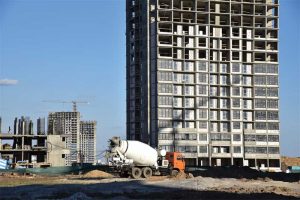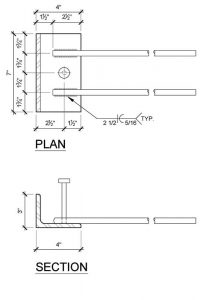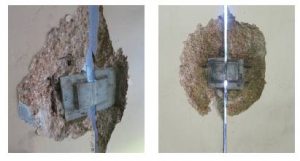
by George R. Mulholland, SE, PE, and Demetria E Boatwright, EIT, CDT
As a building material, concrete is particularly susceptible to volume changes, which can be caused by thermal effects, creep, and shrinkage. When materials like concrete are constrained to prevent volume changes, large internal forces and stresses develop. Therefore, it is important for architects and engineers to work together in order to avoid inappropriately constraining building materials; ensure the internal forces and stresses caused by volume changes are accounted for in design; and coordinate the location, configuration, and design of building expansion joints. Failing to consider or properly accommodate building movements caused by volume change can result in structural problems and water infiltration.
Sources of volume change in concrete structures

Images courtesy Raths, Raths & Johnson
Changes in temperature over time cause all building materials, including concrete, to expand as the temperature rises and contract as it falls. Expansion and contraction due to temperature changes occur in all directions and repeat cyclically throughout the life of a structure. The magnitude of thermal expansion and contraction is relatively straightforward to calculate and is dependent on the material’s coefficient of thermal expansion, the temperature change it experiences, and its dimensions.
Shrinkage and creep are two further sources of volume change impacting concrete structures. The American Concrete Institute (ACI) defines shrinkage as a “decrease in either length or volume of a material resulting from changes in moisture content or chemical changes,” (referenced from the American Concrete Institute [ACI] CT-13, ACI Concrete Terminology). Creep is defined as “time-dependent deformation due to sustained load.” Shrinkage and creep are closely related and difficult to predict. Shrinkage occurs gradually in all directions as concrete cures and dries. Shrinkage-compensating concrete, or adjusted water-cement ratios and aggregate size can be used to limit the impact of shrinkage on structural movements. As indicated in ACI’s definition, creep is also time-dependent. It occurs in the direction of a sustained load and increases over time, continuing for several years after construction is complete. Since creep and shrinkage are closely related, prediction models for concrete structures often combine them together as time-dependent deformations (consult ACI R318-14 Commentary Section R24.2.4.1). The final magnitude of time-dependent deformations can be roughly two times that of elastic deformations (those occurring instantaneously when loads are first applied to the structure). The exact proportion depends on the concrete mix design, the curing conditions such as moisture and humidity, the concrete component’s type and dimensions, the age of the concrete when loads are first applied, and the direction and type of loading.

In prestressed structures, the pre- or post-tensioning force causes additional creep effects, which manifest in the gradual shortening of members along the axis of the prestress force. The magnitude of shortening caused by pre- or post-tensioning is dependent on the length of the concrete member along the axis of the prestress force, the time at which the prestress force was applied, the average prestress force applied to the concrete, and the modulus of elasticity of the concrete and the prestressing tendons.




